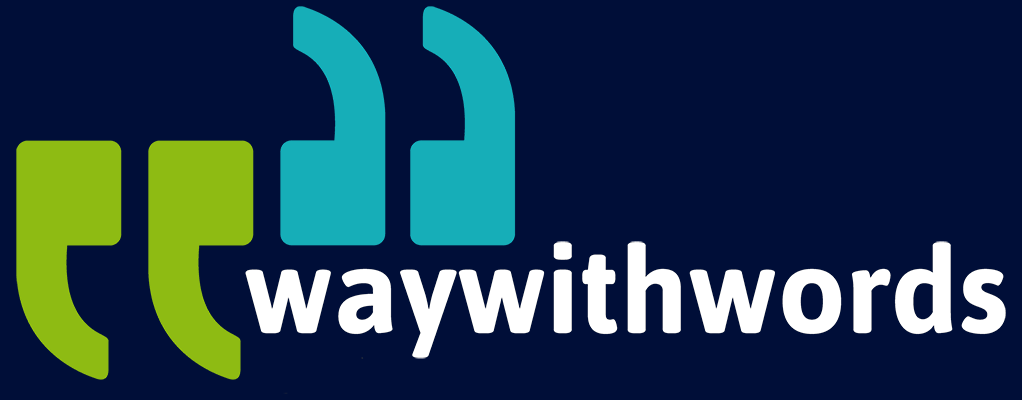Managing High-Volume Captioning: Tips and Strategies
Why Managing Caption Workloads Efficiently Matters
Managing captions for large volumes of video content can quickly become overwhelming without the right systems in place. Whether you are a content creator uploading dozens of short videos weekly, a corporate trainer rolling out hundreds of eLearning modules, or a media professional overseeing a catalogue of programming, maintaining quality, consistency, and compliance across all captioned content is essential.
Captioning is not just about transcribing spoken words into text. It involves synchronisation, formatting, accessibility considerations, technical terminology, and in many cases, legal compliance. The more content you manage, the more critical it becomes to adopt scalable systems that can handle an expanding volume without compromising on accuracy or compliance.
If workflows are not robust and automated where possible, the entire process can bottleneck—leading to delayed uploads, inconsistent caption formats, inaccurate transcriptions, or even reputational damage due to non-compliance with accessibility regulations. As organisations expand their digital video presence, this challenge only intensifies.
Some of the most frequently asked questions when it comes to managing high-volume captioning include:
- How can I streamline my captioning process without sacrificing quality?
- What tools are best for bulk captioning solutions across different formats and languages?
- How do I ensure quality control over such a large number of files?
- Can automation be relied on, or do I still need human verification for accuracy?
- How do I maintain accessibility and compliance as my content library grows?
This short guide provides practical, structured insights into managing caption workloads efficiently. From the best tools and systems to essential quality assurance checks and real-world examples, we explore what it takes to run a smooth, high-volume captioning workflow at scale. We’ll also provide actionable tips, resource links, and insights into how some organisations have successfully managed this complex task.
9 Key Points For Captioning Workloads
1. Choosing the Right Tools for High-Volume Captioning
High-volume captioning begins with selecting the right software and tools. The choice of platform will determine how efficiently you can process multiple videos, manage team workflows, and maintain quality across all captions. Your chosen tool should support key functionalities such as:
- Batch uploading and caption generation
- Multi-language support
- Custom dictionary or vocabulary features
- Cloud integration for file sharing
- Real-time collaboration and review options
Many advanced captioning tools offer high-volume processing features and support seamless API integration with popular content management systems and editing software. These solutions typically include batch caption generation, cloud-based collaboration, and compatibility with industry-standard file formats. By choosing a platform that aligns with your content volume, file types, and workflow preferences, you can significantly reduce turnaround time, improve team coordination, and enhance captioning accuracy through automated and manual review functions.
2. Establishing an Efficient Captioning Workflow
A solid workflow forms the backbone of any high-volume captioning process. This involves clearly mapping each stage of production:
- Ingest: Uploading video content to a central system
- Process: Generating or importing automatic captions
- Review: Human proofreading and synchronisation
- Approve: Quality check and compliance validation
- Deliver: Exporting in multiple formats (SRT, VTT, etc.) and publishing
Project and workflow management tools play an essential role in the coordination of high-volume captioning tasks. These platforms help centralise all project activities, offering visibility across different stages of production, from transcription to final review. By assigning responsibilities, setting deadlines, and tracking the progress of each task, such systems allow teams to stay organised even as workloads scale dramatically.
Effective workflow tools typically support timeline views, task dependencies, automated notifications, and integration with storage or editing environments. For example, caption editors can be automatically notified when a video is uploaded and ready for processing, while reviewers are queued to approve captions once edits are complete. This level of coordination ensures that content moves smoothly through the pipeline without delays.
Moreover, automation features reduce repetitive actions such as manual file handovers or progress reporting. By setting up rules that trigger actions (e.g., status updates or file transfers), teams can eliminate unnecessary steps and focus more on quality and output.
In complex environments where multiple editors, languages, or formats are involved, having a centralised system becomes even more critical. It not only minimises miscommunication but also allows for greater transparency, which is especially valuable when content needs to meet tight publishing schedules or compliance standards. With the right approach to workflow management, bottlenecks are significantly reduced and teams can scale output effectively while maintaining high standards.
3. Using AI to Scale Bulk Captioning Solutions
AI-powered captioning systems enable the automation of subtitle creation across large batches of video content. These tools utilise advanced Automatic Speech Recognition (ASR) technologies capable of processing audio in various languages and dialects, delivering caption files that are timestamped and synchronised with spoken content.
The core advantage of AI captioning lies in its speed and scalability. Once configured, an ASR system can handle thousands of minutes of content with minimal human intervention. This makes it especially useful for organisations with growing content libraries or frequent publishing schedules. Many modern ASR platforms also support batch uploading, configurable templates, and language-specific transcription models.
However, while automation dramatically increases efficiency, it doesn’t always guarantee accuracy. Captions generated purely by AI can struggle with regional accents, overlapping speech, low audio quality, and technical or industry-specific terminology. To address these limitations, it’s important to integrate Machine Transcription Polishing (MTP) into the workflow. This involves having trained editors review and refine automated outputs to ensure clarity, context accuracy, and proper formatting.
The combination of AI-generated base transcripts and human editing allows organisations to strike a balance between speed and precision. This hybrid approach is particularly beneficial when captioning content that must meet accessibility standards, legal guidelines, or brand-specific style requirements.
For any high-volume captioning operation, understanding the strengths and limitations of AI captioning tools is critical. While they significantly reduce manual labour and turnaround time, they are most effective when implemented as part of a larger workflow that includes verification and quality control stages. This ensures that the final caption output not only meets deadlines but also meets the expectations of a diverse audience.
While AI is efficient, accuracy can vary depending on speaker accents, background noise, or technical jargon. Combining AI with Machine Transcription Polishing (MTP)—where editors refine the AI-generated output—is key to achieving over 95% accuracy.

4. Implementing Quality Control Checks
Large-scale captioning requires strict quality control to avoid errors that could breach accessibility laws or frustrate viewers. Implement tiered quality checks:
- Random sample reviews
- Multi-language spot-checking
- Format consistency audits
- Error logs and feedback loops
While automated systems are useful in identifying technical errors—such as incorrect timing or overlapping captions—they cannot fully assess the context or meaning behind spoken words. This is where human oversight becomes indispensable. People bring nuance, experience, and contextual awareness that machines simply cannot replicate. For instance, homophones, regional phrases, or emotionally charged dialogue can often be misinterpreted by automated tools, leading to confusion or inaccuracy in captions.
To further ensure quality and consistency across all captioned content, it’s essential to introduce and maintain a comprehensive captioning style guide. This document should outline rules for punctuation, spelling conventions, line breaks, speaker identification, and how to caption non-speech elements such as music or sound effects. With a standardised guide in place, all team members—whether in-house or external—can align their outputs with a clear editorial standard.
A style guide also simplifies onboarding for new team members and reduces time spent on revisions, as fewer inconsistencies are likely to occur. In high-volume captioning environments where speed and accuracy must go hand-in-hand, the combination of human review and structured guidelines creates a reliable system for delivering professional and accessible captions at scale.
5. Scaling Captioning for Multi-Language Content
For global content, captioning must be localised. Many tools allow translation and subtitle conversion, but context accuracy is often lost in auto-translations. Use human translators for priority content and maintain a shared translation glossary.
Several captioning and subtitle tools support language localisation and cross-format editing, allowing editors to adjust subtitle timing, translation, and layout with greater ease. These platforms generally offer a user-friendly interface for importing video or subtitle files, editing text blocks, synchronising timing, and exporting to various industry-standard formats. Many also support translation overlays and allow side-by-side comparison of original and translated content, which is particularly useful for quality checks during multilingual projects.
Using these tools, editors can efficiently manage complex captioning tasks such as aligning translated subtitles, formatting captions for different screen sizes, and reviewing character limits per line to maintain readability. Some tools include preview modes to check how subtitles will appear on-screen and allow batch processing features for large volumes of content. This functionality is particularly helpful when captioning needs to be consistent across multiple videos or languages.
For teams working with international content, selecting a platform that supports multi-language workflows and custom formatting options can significantly reduce editing time. Additionally, having the ability to easily switch between subtitle formats (e.g., SRT, VTT, SSA) and apply localisation settings improves both speed and accuracy. This flexibility is vital in maintaining quality while working at scale.
6. Assigning Roles and Responsibilities
Assigning clear responsibilities reduces confusion and supports faster throughput. Consider roles such as:
- Captioning Lead
- Technical Integrator
- Review Editor
- Accessibility Officer
- Compliance Auditor
Assigning defined roles within a high-volume captioning project ensures clarity, accountability, and efficiency. Each role should have clearly outlined Key Performance Indicators (KPIs), deadlines, and levels of access to tools or content. This structure eliminates ambiguity about who is responsible for each task, which is particularly important in fast-paced production environments where timelines are tight and errors can be costly.
KPIs help measure performance and maintain accountability across teams. For example, a captioning lead might be assessed on overall output volume and quality, while a reviewer’s performance might be tied to error detection rates or turnaround time. Having predefined timelines also ensures that content flows smoothly from one stage to the next without unnecessary delays.
Access levels are equally important. Granting editors, reviewers, or compliance officers the right level of access helps prevent version conflicts, unauthorised changes, or bottlenecks due to waiting on approvals. Structuring access around responsibilities streamlines operations and enhances data security.
To manage all these elements effectively, collaboration tools are essential. They allow teams to assign tasks, track progress, exchange feedback, and centralise resources. This not only promotes transparency but also ensures that everyone is aligned with the production schedule. In complex workflows, this level of coordination is key to scaling captioning operations without sacrificing quality.
7. Budgeting for Bulk Captioning Solutions
Costs for high-volume captioning depend on:
- Software/platform fees
- External captioning services
- In-house staff wages
- Post-production corrections
When planning the budget for high-volume captioning, it is essential to consider the range of service levels required for different types of content. One practical strategy is to establish internal tiered pricing models based on the complexity and audience of the material. For instance, basic captioning using unpolished automated transcripts may be suitable for internal use, such as early-stage reviews or drafts. In contrast, finalised content destined for public release or educational use may require more detailed editing, formatting, and quality control, warranting a higher cost allocation.
By categorising your captioning needs into service tiers—such as draft, standard, and premium levels—you can allocate resources more strategically and manage expectations around cost, quality, and turnaround time. This model also helps decision-makers understand the value behind each level of service, ensuring that more effort and budget are directed toward high-impact content.
Additionally, as content volumes grow, economies of scale come into play. Organisations processing hundreds or thousands of minutes per month should consider negotiating discounts or favourable terms with their service providers based on projected usage. This proactive approach helps reduce per-unit costs over time, supports long-term planning, and aligns budget allocations with actual output. Tracking costs per captioned minute can further inform future budgeting decisions and resource planning.

8. Legal and Accessibility Compliance
In the United Kingdom, captioning requirements are governed by national regulations that ensure accessibility and equal access to media content. These rules apply to both broadcast and online video platforms, requiring that captions be accurate, synchronised, and easily understood. The regulations stipulate that captions must reflect the spoken content precisely, include relevant non-verbal sounds, and appear on screen at appropriate times to avoid confusion.
For organisations involved in education or public services, there are additional compliance expectations. Institutions delivering online lectures, recorded seminars, or digital learning content must provide captioned versions that meet recognised accessibility standards. This ensures that learners who are deaf, hard of hearing, or have other communication needs can engage fully with the material. Accessibility standards also apply to user interfaces, requiring captions to be compatible with screen readers and assistive technologies.
Failure to meet these requirements can result in formal complaints, loss of funding, or reputational damage. Therefore, organisations producing video content at scale must implement quality assurance checks and maintain documentation demonstrating their compliance. Establishing internal policies that define captioning standards and regularly reviewing workflows against legal benchmarks is essential to ensuring that all captioned content remains compliant, inclusive, and suitable for public access.
- Are accurate and synchronised
- Include speaker IDs and non-speech elements
- Are formatted for screen-readers and assistive tech
Maintain records of caption compliance for audits.
9. Measuring Captioning Effectiveness
Use KPIs to evaluate your captioning strategy:
- Average turnaround time
- Caption accuracy rate
- Accessibility compliance score
- Viewer engagement levels
- Internal vs. external content coverage
Understanding how viewers interact with captions is essential for evaluating the overall effectiveness of your captioning efforts. Most modern video platforms offer built-in analytics that allow you to track key performance indicators related to caption usage. These analytics may include metrics such as the percentage of viewers who enable captions, the average time captions are used during video playback, and viewer retention comparisons between captioned and non-captioned content.
These insights are incredibly useful for making data-driven decisions. For example, if analytics reveal that viewers consistently watch videos longer when captions are enabled, this can support increased investment in captioning workflows. Similarly, if certain content types show higher engagement with specific caption styles or languages, teams can adjust their strategy accordingly.
Beyond user engagement, caption analytics also help identify accessibility trends. Monitoring whether viewers rely on captions across devices or languages can highlight areas for improvement, such as the need for localisation or alternative formats for better compatibility.
Integrating caption performance data into your broader content strategy ensures that captioning is not treated as a one-off task, but as a critical component of user experience and inclusivity. Over time, consistent monitoring can help optimise captioning efforts, improve viewer satisfaction, and support organisational goals around accessibility, compliance, and audience reach.
Key Tips for Managing High-Volume Captioning
- Use captioning platforms that support batch processing, multi-language files, and cloud storage.
- Develop a centralised style guide and glossary for terminology to ensure consistency across teams and formats.
- Combine automation with human verification to maintain a balance between scale and accuracy.
- Clearly define and assign roles for quality assurance, legal compliance, and technical troubleshooting.
- Conduct regular performance reviews and track caption usage analytics to optimise your workflow.
Managing caption workloads across large volumes of content can feel like trying to navigate a maze—but with the right systems, tools, and practices in place, it becomes a streamlined and highly productive process. By combining automation with skilled human review, teams can manage bulk captioning while maintaining accuracy, consistency, and accessibility.
The ten key areas we explored—from captioning platforms and workflows to budgeting, compliance, and case studies—highlight the comprehensive effort required to build a successful high-volume captioning strategy. Each component plays a role in ensuring your captioning operation supports wider business goals, maintains accessibility compliance, and offers a user-friendly experience for viewers.
Organisations that invest in scalable captioning infrastructures benefit from faster turnaround times, better content reach, and stronger engagement metrics. Moreover, with the right mix of tools and team structures, captioning becomes not just a task to complete but a strategic advantage.
One key piece of advice: Design your systems with future growth in mind. Whether you’re captioning hundreds of videos now or planning for thousands next year, choosing scalable platforms and clearly defined workflows will help you adapt to increasing demand without starting over.
Further Captioning Resources
Content Management – Discusses how content volume can be managed efficiently across teams and platforms.
Way With Words Captioning Services – Manage high volumes of content with our scalable captioning services. We provide efficient and accurate captioning solutions to meet your bulk content needs.
